6 Types of Investors - Which One Are You?

Estimated reading time: 10 minutes
There’s more than one way to climb a mountain, and there’s more than one way to achieve financial independence.
Investing is a journey filled with countless paths and unique destinations. Each type of investor charts their own course, guided by personal preferences, appetite for risk, and financial goals.
Some investors prefer the low-maintenance, passive approach, while others would gladly spend 60 hours a week researching the markets in hopes of discovering an untapped opportunity.
In this article, we explore six different types of investors, each with their own approach to wealth-building and achieving financial independence.
What is an Investor?
Before we delve into the six types of investors, it's essential to understand the core essence of what an investor truly is.
An investor is an individual, organization, or entity that commits financial resources with the expectation of receiving a return on investment (ROI). They seek to grow their wealth, generate income, or achieve specific financial objectives through careful allocation of their funds to various assets.
Investors play a pivotal role in driving economic growth, prosperity, and local communities. Plus, if they’re able to achieve a respectable return, they can gradually climb the economic ladder.
The main trade-off that investors face is one of risk and reward. Higher-risk investments typically have the potential for greater rewards, but they also carry a higher probability of loss. On the other hand, lower-risk investments may provide more stable returns but often yield lower overall gains.
Now that we know what an investor is, let’s dive into the six types of investors:
The 6 Types of Investors
1. Visionary Investors
Are you a dreamer, constantly envisioning new opportunities and possibilities? If so, you might be a Visionary investor.
Visionaries are forward-thinkers who seek to make their mark in the world of investments with bold ideas and a willingness to take calculated risks. These investors are known for their innovative spirit and ability to see potential where others might not.
They are driven by the thrill of discovering untapped markets and groundbreaking ventures. With a high tolerance for risk, Visionaries understand that success often comes with a degree of unpredictability, and they are willing to weather the ups and downs of their investments.
Some assets that may suit Visionary investors are:
Venture Capital: Visionary investors are a natural fit for investing in early-stage startups, groundbreaking ideas, and disruptive technologies. These investors are willing to take on increased risks in exchange for the possibility of sky-high returns on their investments. By providing capital, Visionary investors play a crucial role in fueling technological advancements and shaping the future of various industries.
Cryptocurrencies: Visionary investors are more likely than most to believe in the potential of the blockchain, digital currencies, and decentralized finance. Cryptocurrencies like Bitcoin and Ethereum have garnered significant attention in recent years for their disruptive nature and potential to revolutionize the financial landscape. While cryptocurrencies come with higher volatility and regulatory uncertainties, Visionary investors see them as a vehicle for challenging traditional financial institutions and democratizing access to financial services globally.
Green Energy Projects: Green energy projects, such as solar and wind farms, hydroelectric power plants, and other renewable energy initiatives, align well with the Visionary investor. By supporting clean energy initiatives, they help drive innovation and accelerate the transition to a more sustainable energy landscape.
2. Analyst Investor
The Oracle of Omaha may be the most famous Analyst Investor, though he’s far from the only one.
The Analyst Investor approaches investment decisions with a meticulous and data-driven mindset. They thrive on research, analysis, and understanding the underlying fundamentals of potential investments. The Analyst Investor is keen on evaluating financial statements, market trends, and economic indicators before making any investment choices. They often have a passion for studying financial markets and pride themselves on their due diligence.
When the markets lean one way, the Analyst combs through spreadsheets to explore whether there are opportunities in the other direction. They base their decisions on objective data rather than emotions or trends. They thoroughly scrutinize potential investment options and seek to identify undervalued assets.
The Analyst considers all possible avenues for growth, ranging from tech giants to private companies. That said, these investors do tend to gravitate to certain assets more than most:
Individual Stocks: Analyst Investors often prefer investing in individual stocks, as it allows them to conduct in-depth research and analysis on specific companies. They may look for well-established firms with strong financials, competitive advantages, and growth prospects. They might also explore distressed brands with unstable balance sheets. By providing an infusion of capital, these firms may be able to rebound, generating significant returns for the Analyst.
Sector-Specific ETFs: Exchange-Traded Funds (ETFs) that focus on specific sectors or industries can be appealing to Analyst Investors. They allow for targeted exposure to industries of interest, and the Analyst Investor can apply their research skills to select ETFs with promising potential.
Real Estate: Analyst Investors may delve into real estate investment opportunities, particularly those that offer the potential for value appreciation or significant cash flow. Their ability to conduct detailed market analyses, assess property performance, and evaluate potential risks may give them a leg up over the competition.
When combined with the tax-advantaged growth of a self-directed IRA (SDIRA), this may lead to significant year-over-year returns. Plus, if they become an Entrust client and gain access to the exclusive myDirection Card, they can minimize transaction fees and eliminate waiting times.
5 Steps to investing in Real Estate with an SDIRA. Get your free copy now >
3. Community Builder Investors
For the Community Builder, investing isn’t only about securing their financial future — it’s about making an impact.
The Community Builder views their portfolio as a means not only to generate financial security but also to create lasting change. Community Builders often seek out assets that address critical issues like renewable energy, affordable housing, education, and healthcare. They may prefer investing locally and seeing the impact of their hard-earned savings in their community.
A Community Builder understands that creating positive change takes time. With the long-term future in mind, they often gravitate to assets such as:
Multifamily Housing Projects: By supporting the development or renovation of affordable housing units, the Community Builder can provide safe and stable living environments for lower-income individuals and families. Investing in high-quality multifamily real estate can help combat the housing supply shortage and improve overall community well-being. Not to mention it can do wonders for generating positive cash flow for their SDIRA.
Renewable Energy Ventures: Investing in renewable energy ventures, such as solar or wind farms contributes to cleaner energy sources and helps reduce carbon emissions and reliance on fossil fuels over the long term.
Local Businesses: Small businesses can contribute to the local economy by creating jobs, supporting local suppliers, and providing essential goods and services. Community Builder investors value the idea of investing in businesses that directly benefit the neighborhoods they care about.
4. Set-and-Forget Investor
For some investors, the ultimate freedom that comes with a well-balanced portfolio is the ability to forget about it entirely.
The Set-and-Forget Investor prefers a hands-off approach to investing. They have a long-term perspective and are content with letting their investments grow steadily over time without making frequent adjustments to their holdings. Set-and-Forget Investors prioritize simplicity and avoid the stress of actively managing their investments.
While they may not actively monitor the markets, they stay disciplined in their investment strategy and remain committed to their long-term financial goals.
Set-and-Forget Investors often look to lower-maintenance assets like:
Target Date Retirement Funds: These funds automatically adjust their asset allocation over time, becoming more conservative as the target date for retirement age approaches.
Dividend Stocks: Dividend-paying stocks are shares of companies that distribute a portion of their profits to shareholders in the form of dividends. Set-and-Forget Investors can reinvest these dividends automatically, allowing their investment to grow steadily without requiring ongoing intervention.
Real Estate Investment Trusts (REITs): REITs are companies that own, operate, or finance income-generating real estate. They offer an opportunity for Set-and-Forget Investors to gain exposure to the real estate market without the need for direct property management. REITs often provide regular dividends, making them suitable for low-maintenance, long-term investors.
5. Slow and Steady Investor
Savvy investors recognize that get-rich-quick schemes often lead to disaster. For Slow and Steady Investors, developing wealth over years and decades is the true path to success.
These investors bring a cautious and methodical approach to investing. They prioritize long-term stability and are willing to avoid higher-risk, high-reward investments for the security of slow, consistent growth. Slow and Steady Investors believe in the power of compounding and understand that building wealth takes time and patience.
While Set-and-Forget Investors tend to avoid scrutinizing their portfolios, Slow and Steady investors closely and actively monitor their assets to mitigate risks. They are also more likely to consider assets that may require significant due diligence, especially if the assets present very little risk in exchange for steady growth.
Here are a few investment options that Slow and Steady investors typically gravitate toward:
Index Funds: These low-cost assets allow you to invest in the entire stock market, and offer broad exposure to a wide range of companies and sectors. This can provide Slow and Steady investors with a diversified, low-risk investment. These funds are generally less volatile than individual stocks, making them a suitable choice for risk-averse investors.
Precious Metals: Precious metals like gold and silver are often considered a safe-haven asset during times of economic uncertainty. They also tend to have a low correlation with traditional financial assets like stocks and bonds, providing the potential to withstand the consequences of a financial crash.
Private Lending: By lending funds to borrowers, Slow and Steady investors can earn steady, predictable, interest payments. Plus, these investors can minimize their default risk by carefully assessing the creditworthiness of borrowers.
More than most investors, Slow and Steady investors pride themselves on their due diligence skills. Asking the right questions can help you identify warnings signs and avoid the wrong investment. Download our Self-Directed IRA Due Diligence Guide for specific red flags to look out for with three popular alternative assets held in an SDIRA.
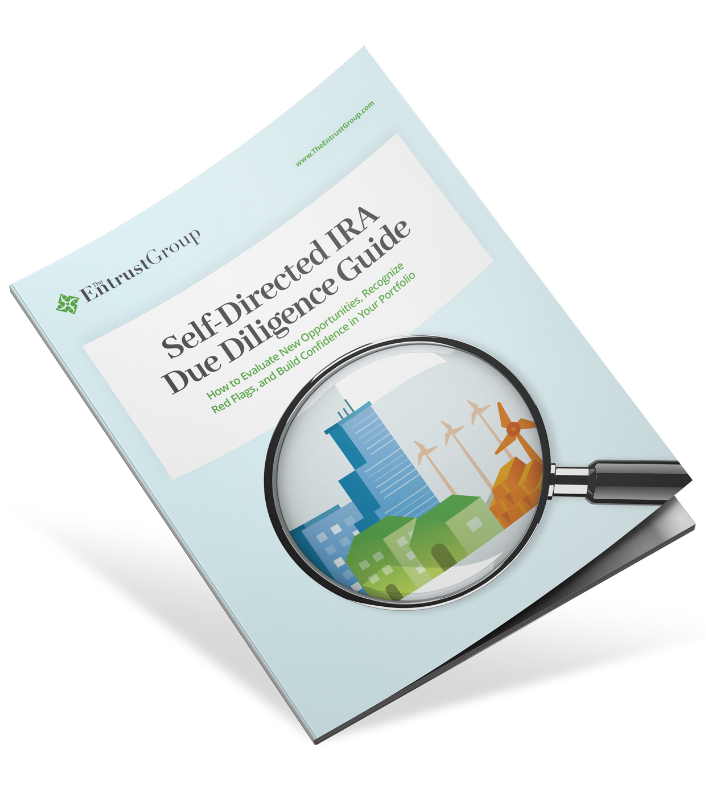
Self-Directed IRA Due Diligence Guide
6. Budding Investor
Every journey starts with a single step. Whether you’re 21 or 41, the best time for a Budding Investor to start building their portfolio is today.
The Budding Investor may be a recent graduate, a young professional, or any individual who has recently discovered the true potential of compound interest. Budding investors are typically enthusiastic, curious, and open to exploring various investment options. They may have limited experience and knowledge in investment strategies, but they make up for it with their willingness to research and educate themselves.
Here are a few investment options that even inexperienced investors can take advantage of as they’re learning the ropes:
Index Funds: Index funds are passively managed investment funds that aim to replicate the performance of a specific market index, such as the S&P 500. They offer a simple and hands-off approach to investing, making them suitable for those who are just starting out.
Certificates of Deposit (CDs): CDs are time deposits that offer a fixed interest rate over a specified period. They are low-risk and provide higher returns than regular savings accounts.
Single-Family Real Estate: Even inexperienced investors often have experience renting or purchasing a home. Investing in single-family real estate through an SDIRA can be a suitable entry point for the Budding Investor to start building wealth. Entering the real estate market allows these investors to generate rental income and potentially benefit from long-term appreciation. However, if they invest in real estate with their tax-advantaged retirement savings, they should study up on the IRS rules and watch out for prohibited transactions.

Whether you’re a Budding Investor or Analyst with over 30 years of experience, you can always benefit from a well-rounded financial education. Learn about different investment options, risk management, and market trends. Read books, attend webinars, and seek advice from financial professionals to build a solid foundation of financial knowledge.
It’s usually a good idea to start with a small amount of money that won’t impact your day-to-day finances. As you gain confidence and experience, you can gradually increase your investment amounts.
Remember that investing is a journey, and it's essential to have a long-term perspective.
Self-Direction Can Work for All Investor Types
When it comes to investing, there is no one-size-fits-all approach.
Whether you're a dreamer seeking bold opportunities, a meticulous researcher driven by data, or a community leader hoping to leave a lasting legacy, investing is a personal expedition. Embrace your investment identity, align your portfolio with your values and financial goals, and stay true to your long-term vision.
What Should Investors Consider When Planning for Retirement?
No matter what type of investor you are, here are a few essential factors to consider when planning for retirement:
Financial Goals: Determine your desired lifestyle in retirement and the expenses associated with it. Calculate how much you'll need to cover living expenses, travel, healthcare, and any other financial goals.
Timeline: Consider when you plan to retire. If you forecast many years until you plan to begin making withdrawals, then you may consider higher-risk assets.
Risk Tolerance: Assess your risk tolerance, which affects your investment choices. Even if there are many years until retirement, higher-risk investments may not be worth it for you if they are likely to cause psychological stress.
Investment Strategy: Create a diversified investment portfolio that aligns with your risk tolerance and goals. Diversification can help manage risk and enhance potential returns.
Tax Considerations: Regardless of which investor type you are, directing a higher proportion of your funds into retirement accounts like IRAs can be a potent strategy to achieve your long-term investing goals.
After all, these accounts are an effective, government-sanctioned way to reduce your tax liability. They have the potential to greatly improve your take-home earnings compared to investing in taxable accounts.
However, most IRAs and 401(k)s only allow you to invest in stocks, bonds, and mutual funds, restricting your options. That’s where an SDIRA can make a world of difference.
Instead of limiting you to three asset classes, this retirement account empowers you to invest your retirement funds in any asset the IRS allows. This includes real estate for Community Builders, private lending for Slow and Steady Investors, private equity opportunities for Visionaries, and dozens of other options for all investor types.
If you’re ready to learn more about self-direction, schedule a time to talk with an SDIRA expert at The Entrust Group. If you prefer to do your own research first, download our SDIRA Basics Guide. Inside, you’ll find a detailed 101 education on self-directed retirement accounts, including specific assets that SDIRAs can and can’t invest in.





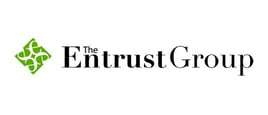
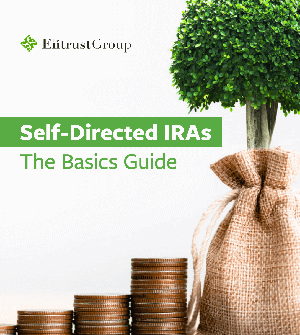






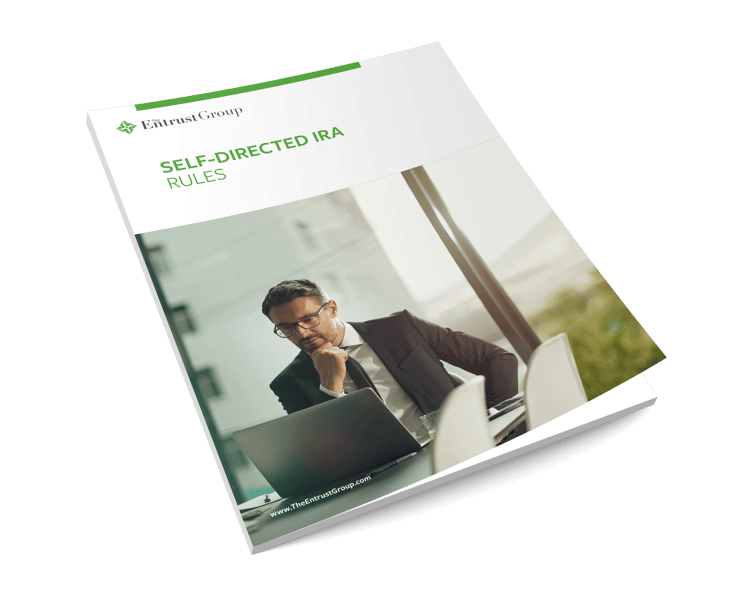
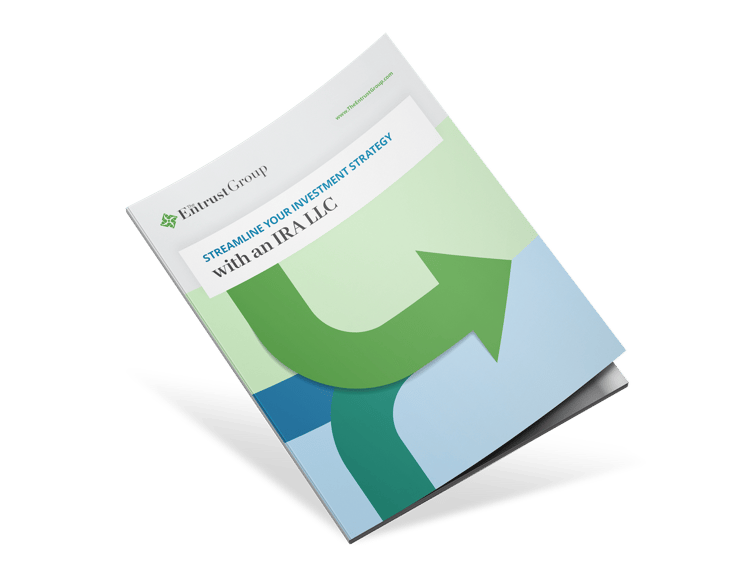

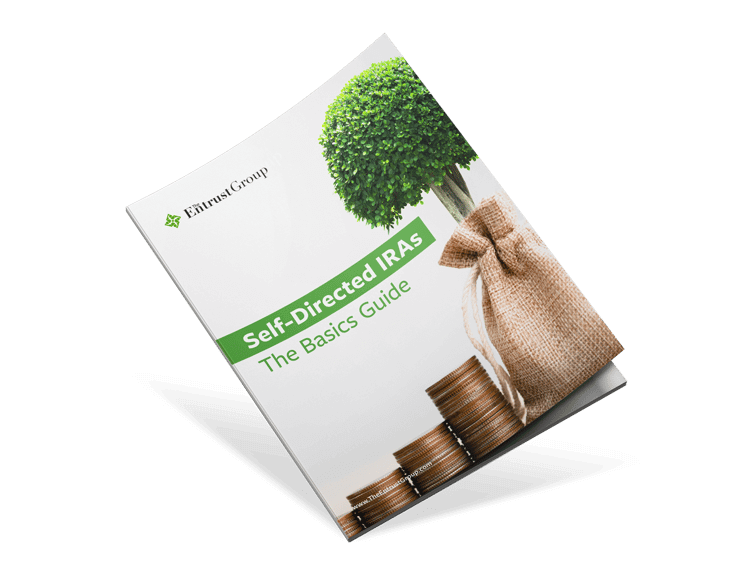


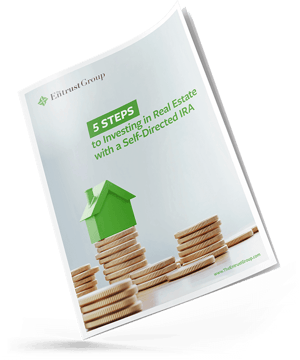


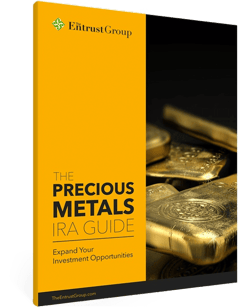


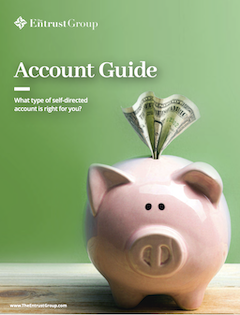
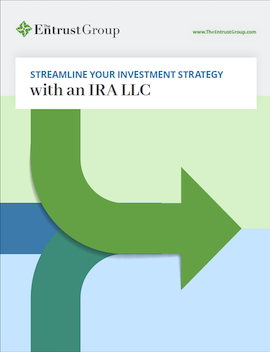

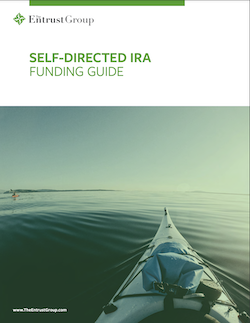
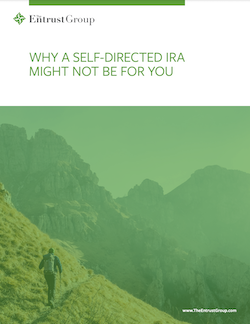
0 Comment